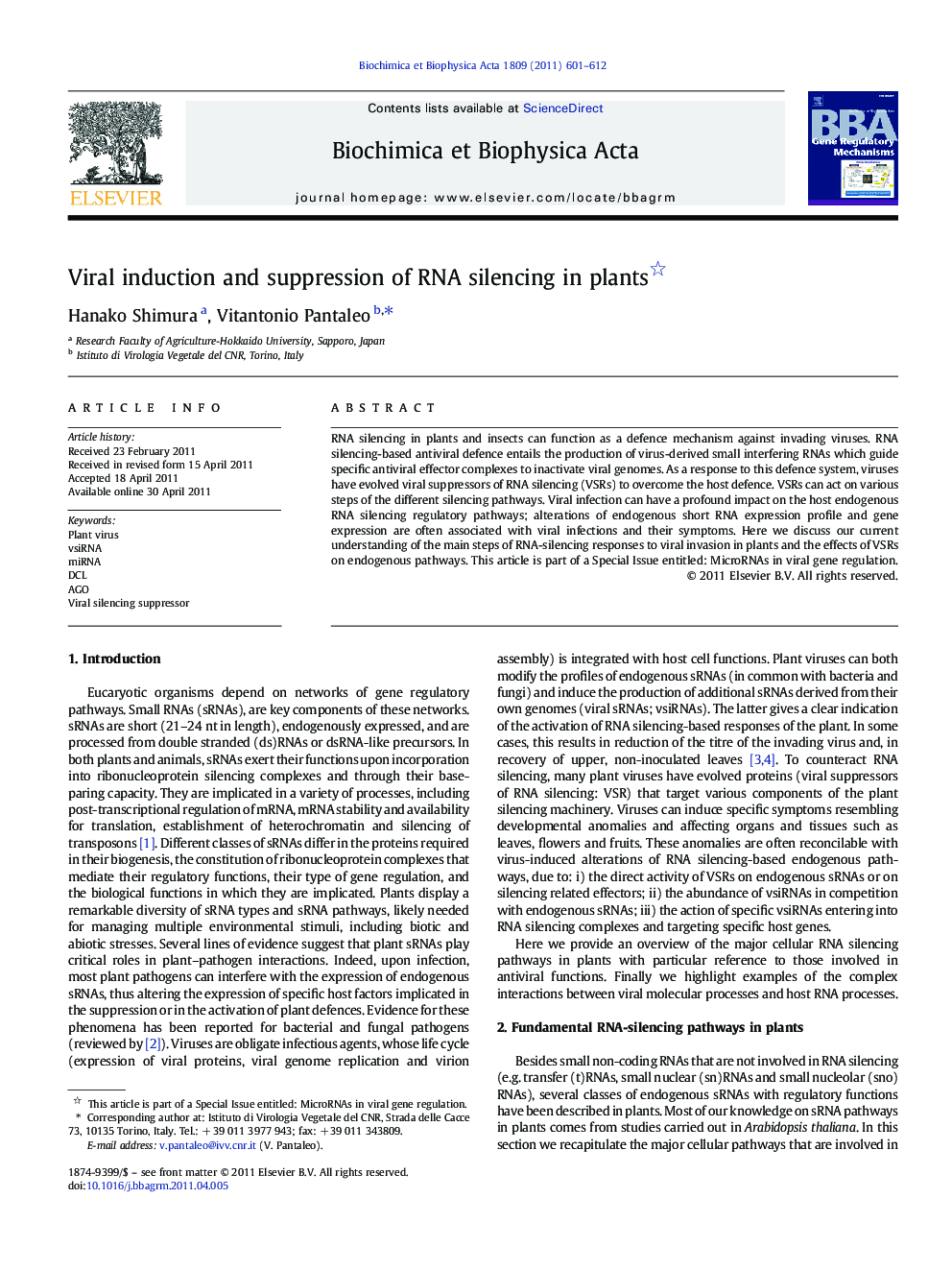| Article ID | Journal | Published Year | Pages | File Type |
|---|---|---|---|---|
| 1946601 | Biochimica et Biophysica Acta (BBA) - Gene Regulatory Mechanisms | 2011 | 12 Pages |
RNA silencing in plants and insects can function as a defence mechanism against invading viruses. RNA silencing-based antiviral defence entails the production of virus-derived small interfering RNAs which guide specific antiviral effector complexes to inactivate viral genomes. As a response to this defence system, viruses have evolved viral suppressors of RNA silencing (VSRs) to overcome the host defence. VSRs can act on various steps of the different silencing pathways. Viral infection can have a profound impact on the host endogenous RNA silencing regulatory pathways; alterations of endogenous short RNA expression profile and gene expression are often associated with viral infections and their symptoms. Here we discuss our current understanding of the main steps of RNA-silencing responses to viral invasion in plants and the effects of VSRs on endogenous pathways. This article is part of a Special Issue entitled: MicroRNAs in viral gene regulation.
Research highlights► Viral siRNAs contribute to plant antiviral response upon their incorporation into RISC. ► To counteract this effect, viruses encode viral silencing suppressor of RNA silencing. ► Viral siRNAs and viral silencing suppressors may alter endogenous RNA silencing pathways.
